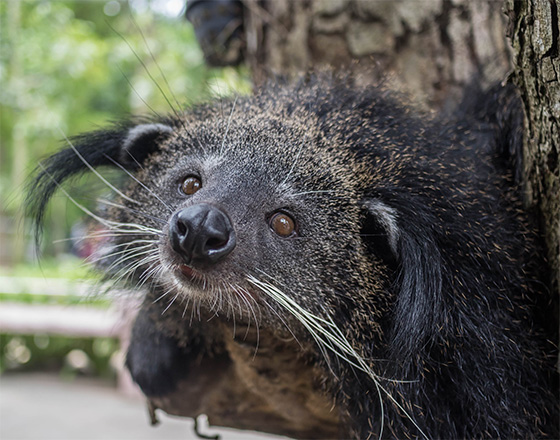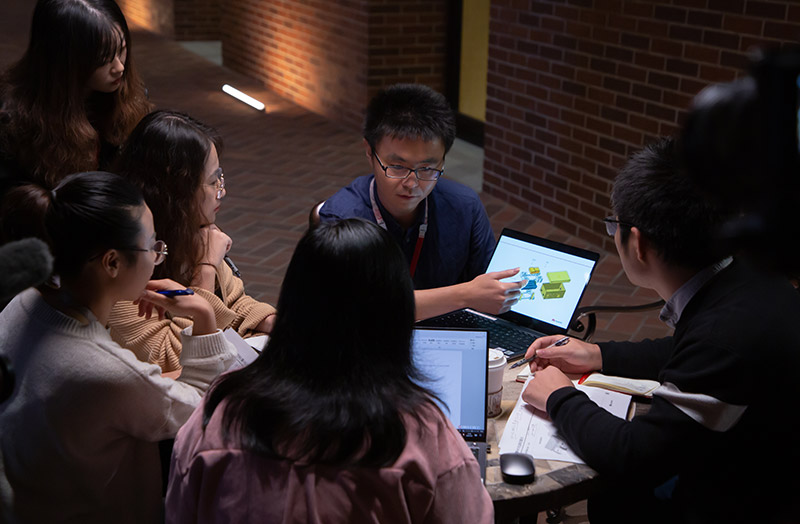Acting for Biodiversity with Technology
At the recent webinar, Business and Finance Journey to Kunming: We’re Part of the Solution, I had the honor of speaking about Huawei’s TECH4ALL initiative.

TECH4ALL centers on using technology to achieve digital inclusion and sustainability – aims that are closely aligned with the UN’s sustainable development goals (SDGs).
We believe that ICT is a key enabler of sustainability.

The topic of my talk at the webinar – and one that I’ll expand on here – is how technology is an enabler of biodiversity. Technology can empower us to take less from nature and do more for nature. And to achieve this, sustainability is central to both our CSR and business strategies.
TECH4ALL: Enabling Biodiversity with Technology
Our long-term digital inclusion initiative TECH4ALL was launched in 2019. Since then, we’ve been running multiple projects with multiple partners to protect natural ecosystems worldwide using digital technology. These projects are already having a beneficial impact on biodiversity.
Nature Guardians
In partnership with Rainforest Connection (RFCx) and local experts and partners, we’re currently supporting bioacoustics projects in 18 countries, including two in the rainforests of Costa Rica and the Philippines, one in the Aoos Gorge in Greece, and another in the ocean off of Ireland’s south coast.
In Costa Rica’s Osa Peninsula and the Philippine’s Palawan rainforest, bioacoustics technology embedded in solar-powered devices known as “Guardians” are capturing the sounds of threats to animals. These include the chainsaws used for illegal logging that are responsible for up to 90% of deforestation and decimate animals’ habitats. Endangered species that the Guardians are protecting include the spider monkey in Costa Rica, a keystone species that’s integral to whole-ecosystem health.
-

Spider Monkey in Costa Rica -

Binturong in Philippines
The data is transmitted to cloud where AI analytics classifies the data as an imminent threat that requires a real-time response from park rangers or as animal calls that can be used for study by biologists and ecologists.
Interestingly, the first project in Costa Rica used an upcycled Huawei phone – others brands were tried first, but the Huawei one was the only one that was sturdy enough to cope with the tough climate!
In Greece’s spectacular Aoos Gorge and surrounding mountains, the Guardian solution is designed to detect the gunshots of poachers and hunters who target the endangered Balkan chamois, as well as wolves and bears. The solution makes up for limited financial and human resources available for policing the area. Since deployment in April, five gunshots have been recorded and word is out in the local community that poachers risk arrest due to the near real-time response.
Read the full story: Protecting Wildlife in Greece with a Shield of Sound
Smart Whale Sounds
Off of Ireland’s south coast, which is home to one-third of the world’s cetaceans (whales, porpoises, and dolphins), we’ve partnered with Ireland ORCA the just-launched Smart Whales Sounds project has deployed an autonomous hydrophone on a “smart buoy” that can detect the calls of whales within an area of 80 km and dolphins within 13 km. The aim is to study the effect of noise pollution on cetaceans – sound is intrinsic to their existence and underpins almost all aspects of their lives.
To do that, the underwater microphone sends the acoustics data to cloud, where analytics is used to study the location, distribution, and behaviors of the cetaceans.

We also hope to develop an early warning system to alert ships to reduce their speed if a whale or dolphin is detected. One of the biggest threats to marine life in the area is ship strikes – the location of the project is near one of Ireland’s busiest ports, Cork.
Read & watch the full story: Turning the Tide against Threats to Ocean Life
Return of the Big Cats
On the China-Russia border, we provided the network technology for connecting the 14,600-km Northeast Tiger and Leopard National Park, which was opened in 2017 as the big cats in the area lacked sufficient space to breed – each female Amur Tiger requires a roaming area of at least 500 km2 area of forest to breed. Taking in parts of Heilongjiang and Jilin provinces along the China-Russia border, the park represents the only settlement area with a breeding population of wild Amur tigers and Amur leopards in China.
The network connects more than 20,000 camera traps that send image and video data in real-time to control centers and experts thousands of miles away. The project was launched with local partners to study the critically endangered Amur tiger and Amur leopard, protect them, and help them repopulate in a suitable environment. And so far it’s working – in 2020, cub litters of both big cats were found. We plan to upgrade the current LTE network with 5G in the future.
We are just one part of the puzzle that makes these projects work – we know technology. But, none of them would be possible without a wide range of experts in many different fields working together. Without partnerships, TECH4ALL couldn’t flourish.
Technology is not in opposition to nature – it’s part of nature and the key to safeguarding biodiversity.
Tech for a Better Planet: Promoting Green Business Industry-wide
Alongside our TECH4ALL initiative, Tech for a Better Planet initiative spans our product portfolio and shapes our business strategies. It covers four areas and has two major targets:

Crucially, we don’t just confine our green strategies to ourselves – we seek to extend sustainable outcomes to our customers, partners, suppliers, and ultimately to the industry as a whole – and encourage them to follow green practices. For us, reducing carbon doesn’t just mean choosing green materials, for example, it means innovating new methods and technologies that can benefit the whole industry chain. Last year we made two key advances in green packaging technology: multi-density cushioning technology and lightweight plastic-steel pallets.
Cushioning Against Carbon
The cushioning technology mixes raw materials of different densities into one mold, so that large and heavy equipment can be better protected using lighter and less material, for example, we now use 38% less packaging for 5G antennas.
In 2020, this technology reduced packaging weight by 1,362 tons – the equivalent of 2,165 tons in CO2 emissions.
Keeping the Wood for the Trees
Traditional plywood pallets are disposable, easily breakable, and consume huge amounts of wood. Our new lightweight plastic-steel pallets are not only more durable and up to 70% lighter, they can also be recycled.
In 2020 alone, we reduced the total weight of Huawei’s shipments by 4,739 tons, wood use by 39,500 m3, and potential CO2 emissions by 23,900 tons. Lighter pallets also lighten the loads being transported by truck, lowering gasoline consumption and carbon emissions.
-

The packaging team discussing cushioning technology -

Plastic-steel pallets in production
Read more about TECH4ALL and Tech for a Better Planet.
We are just one part of the puzzle that makes these projects work – we know technology. But, none of them would be possible without a wide range of experts in many different fields working together. Without partnerships, TECH4ALL couldn’t flourish.
Technology is not in opposition to nature – it’s part of nature and the key to safeguarding biodiversity.
Read more about TECH4ALL and Tech for a Better Planet.
Disclaimer: Any views and/or opinions expressed in this post by individual authors or contributors are their personal views and/or opinions and do not necessarily reflect the views and/or opinions of Huawei Technologies.






Leave a Comment